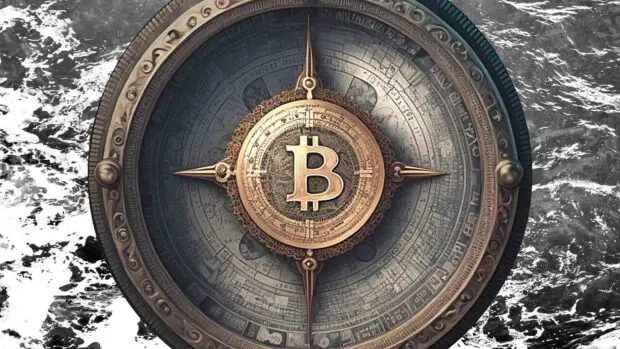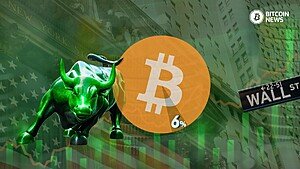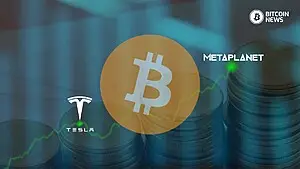The investment landscape has changed dramatically over the past year. Here’s how investors can profit
This article was originally published by Dominic Frisby on MoneyWeek
Money evolves constantly.
Every day there is some tiny new fintech development, but it’s only when you take a step back and look at the ten-, twenty- or thirty-year picture that you realise just how much things have changed.
What is money today is a far cry from what was money when I was a child. Digital technology barely existed back then. We used cash and these things called cheques. You’ve probably heard of them.
It’s not just what we use as money that evolves. How money is created – that changes too. And just this decade there has been a major evolution. That’s what I am going to talk about today.
The creation of money and debt
Once upon a time, you would create money by mining gold and silver. But debt-based money systems have also existed since the dawn of civilisation.
In the Neolithic period (10,000 years ago), clay tokens representing valuable items such as barley or sheep would be baked inside clay balls. When the debt was settled the clay balls would be smashed open.
Humans, being the ingenious folk they are, soon found that it was quicker to simply inscribe the clay with pictures of said items. This gave rise to the first system of writing – hieroglyphics.
Later, coins came along followed by the printing press, both remarkably long-lived technologies, but behind it all there was always metal.
Western Europe abandoned gold in 1914 so it could print the money to pay for the First World War. The United States did the same in 1971 amidst spiralling welfare costs and the conflict in Vietnam. Both years were landmarks in the evolution of money creation.
This was the fiat era when money became debt. Some physical cash was printed or minted, but money for the most part was created when loans were made.
If you borrow £100,000 to buy a house, the bank creates this money using the house as collateral. Suddenly there’s £100,000 in the housing market that wasn’t there before.
That’s why houses have kept on rising since the 1970s – the constant introduction of newly created money through mortgages. Introduce debt into a market and prices rise. If houses were cash-based, they’d be a lot cheaper.
Something similar has taken place in the bond markets and the financial markets with the use of leverage.
There were occasional moments of credit tightening, but the broader trend, especially as economists and governments became obsessed with what they call growth, was ever-expanding credit.
Printing money to prop up the economy
Human beings, being the greedy folk they are (especially when it comes to money), took the whole thing too far and in 2008 the bubble went pop.
Then a whole way new to create money was invented, so-called Quantitative Easing.
With Quantitative Easing central banks created money to buy government bonds effectively printing money to pay for government spending.
And they didn’t stop there. Some central banks bought corporate bonds and mortgage debt while others plunged into the stock market with their new money to prop up equities.
So lots of newly created money went into the financial system and into the pockets of those working in the City and on Wall Street driving another decade or more of rising prices.
But because all this newly created money went into financial assets and housing, it didn’t show up on the inflation numbers. Central bank inflation measures don’t include houses or financial assets.
Then Covid came along.
Thinking they could continue to print money without causing inflation, central banks printed more money and the government handed it out to people.
However, this money actually made its way into the real economy and now we have inflation.
Not realising their mistake central bankers are scratching their heads and blaming Vladimir Putin.
The nature of money creation has changed for good
The nature of money creation has changed. Now money is not just debt. Governments are printing it to fund their activities. And when central bank digital currencies come along the temptation to create more new money to fund giveaways is only going to increase.
As a result, governments are going to play a far greater role in where capital gets allocated.
We turn to the wise old owl that is financial historian Russell Napier. “By issuing state guarantees on bank credit during the Covid crisis, governments have effectively taken over the levers to control the creation of money”.
They said it was temporary, but, to quote the great Milton Friedman, “nothing is so permanent as a temporary government programme”.
We now have the War in Ukraine and with it spiralling energy costs – another emergency.
How to deal with it? Keep with the programme. Lend money and guarantee loans.
Russell Napier again: “By telling banks how and where to grant guaranteed loans, governments can direct investment where they want it to, be it energy, projects aimed at reducing inequality, or general investments to combat climate change. By guiding the growth of credit and therefore the growth of money, they can control the nominal growth of the economy.”
It’s a huge win for the unelected technocrat.
Nobody designed this. Nobody planned it. They have just discovered they can do it. Perhaps it means that the age of the all-powerful central bank is coming to an end.
“This is a shift of power that cannot be underestimated,” says Napier. “Our whole economic system of the past 40 years was built on the assumption that the growth of credit and therefore broad money in the economy was controlled through the level of interest rates – and that central banks controlled interest rates. But now, when governments take control of private credit creation through the banking system by guaranteeing loans, central banks are pushed out of their role. We are moving from a mechanism where bank credit is controlled by interest rates to a quantitative mechanism that is politicised. This is the politicisation of credit.”
Inflation is often accompanied by high unemployment. It was in the 1970s. But today we are in an era of low unemployment. Many are struggling to get the staff (at the price they are prepared to pay) and this isn’t a Brexit thing. It’s happening across Europe and the US.
Still, many government spending programmes will be popular as they’ll create a lot more employment.
We’ll probably also get a load more “growth”, which means higher levels of inflation will be more acceptable (and long-lasting).
How to invest in this rapidly changing world?
So how do we navigate this investment landscape?
We turn to our man Russell once more. “First of all: avoid government bonds. Investors in government debt are the ones who will be robbed slowly. Within equities, there are sectors that will do very well. The great problems we have – energy, climate change, defence, inequality, and our dependence on production from China – will all be solved by massive investment. This Capex boom could last for a long time. Companies that are geared to this renaissance of capital spending will do well. Gold will do well once people realise that inflation won’t come down to pre-2020 levels but will settle between 4 and 6%.”
Gold is in a downtrend. But we like it. It’s even more permanent than a temporary government programme.
But the nature of money creation has evolved once more.










